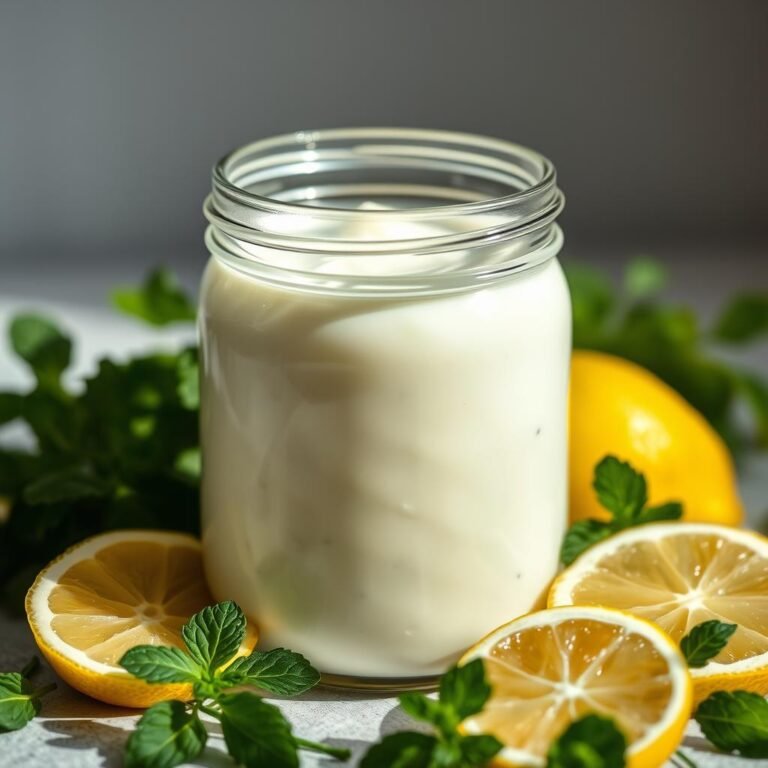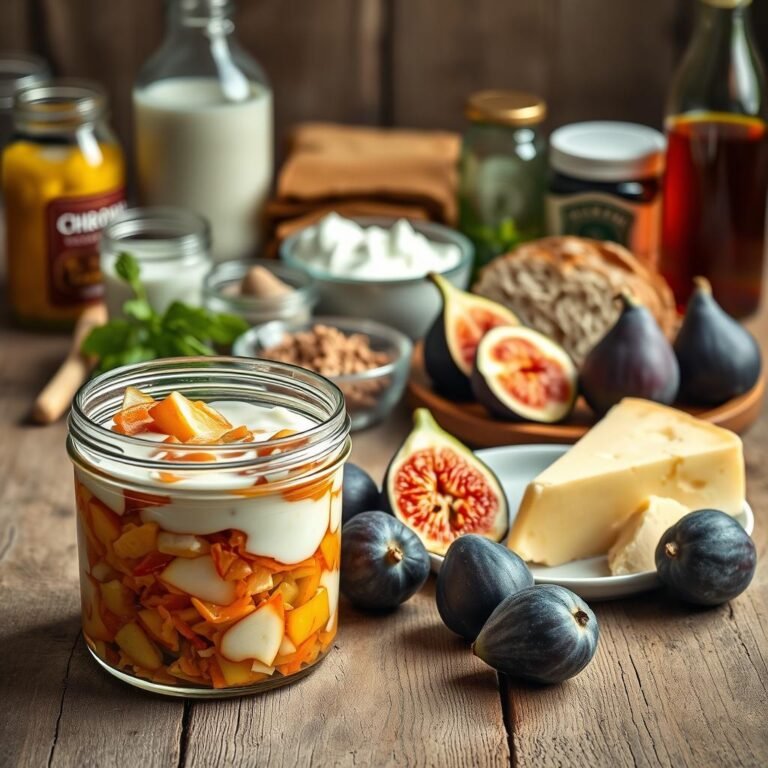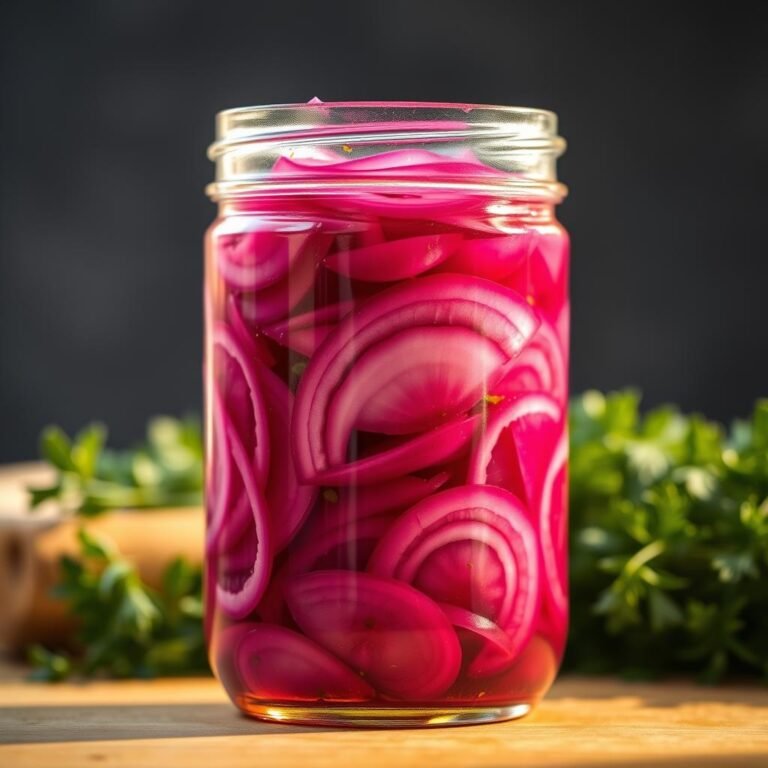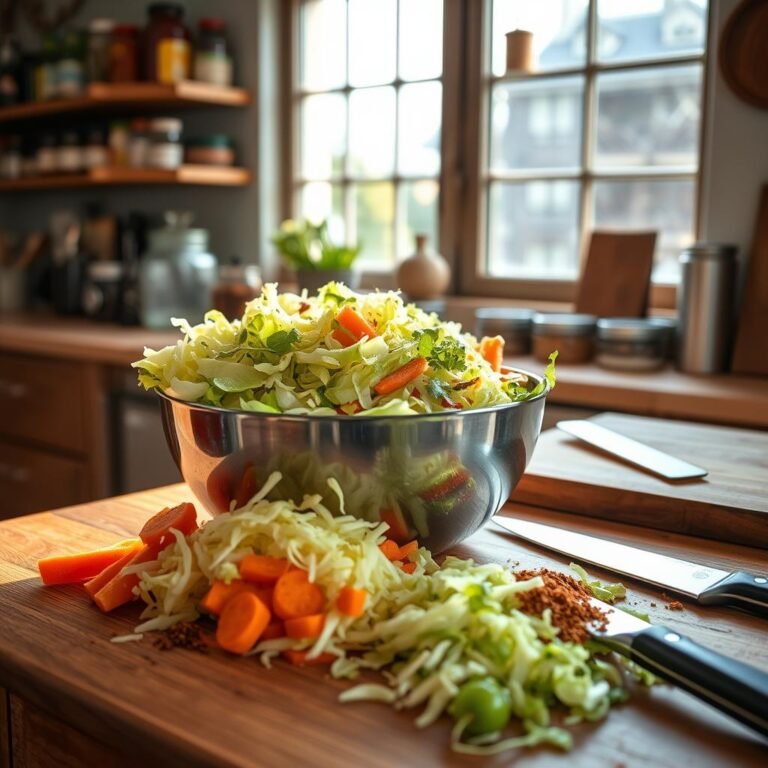Easy Guide on How to Ferment Onions at Home
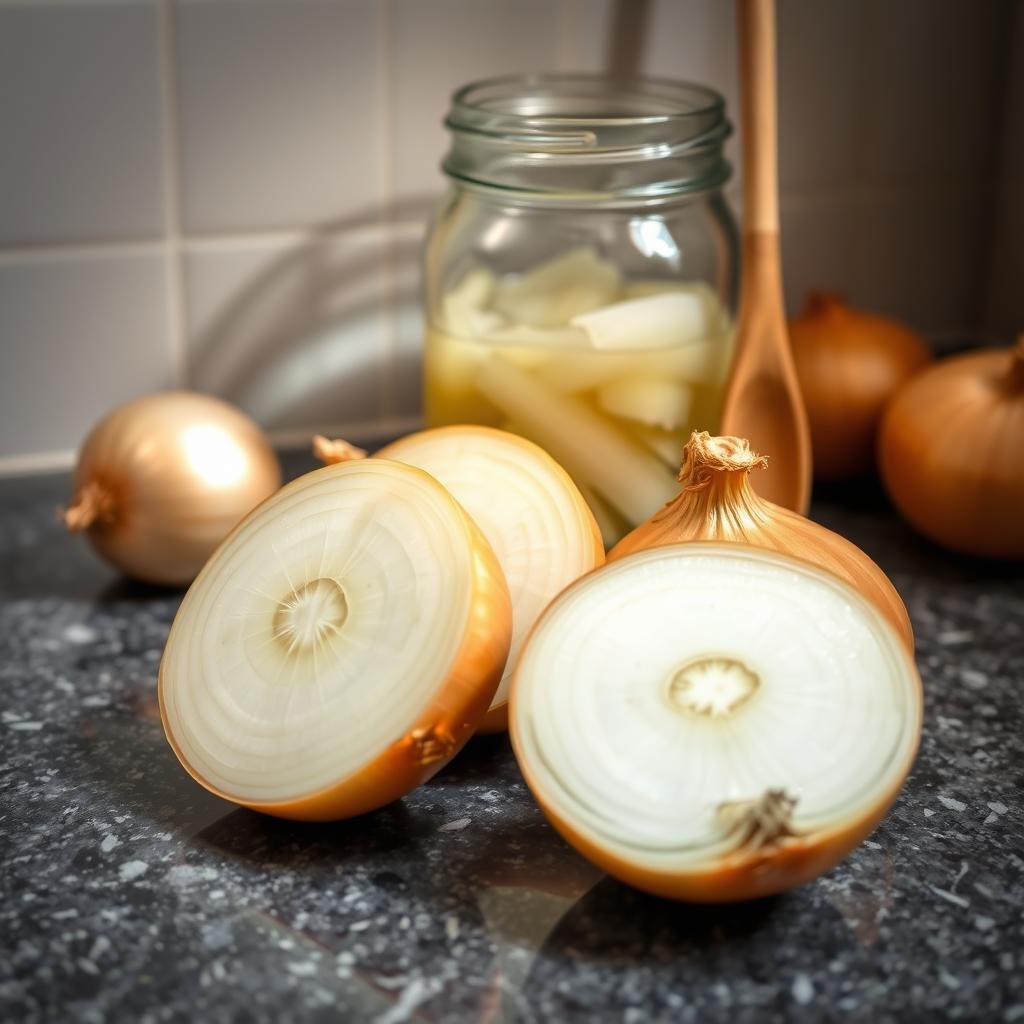
Fermenting onions makes them easier to digest and more nutritious than raw ones. It uses a brine solution of water and salt for 4 to 7 days. This makes them tangy and full of good bacteria.
These fermented onions can stay fresh in the fridge for a long time. They’re great for adding flavor and health to many meals.
If you want to learn how to preserve onions, this guide is for you. It shows you how to ferment onions at home. It’s easy and will help you make tasty, healthy pickles.
Why Ferment Onions?
Lacto-fermented onions are becoming more popular. They are part of the growing interest in fermented foods. The fermentation process makes them a nutrient powerhouse.
During fermentation, onions’ natural sugars turn into lactic acid. This helps beneficial bacteria grow. These probiotics are key for gut health and boost the immune system.
The fermentation also boosts enzyme content. This helps with digestion and nutrient absorption. For those who dislike the strong taste of raw onions, fermented ones are milder and tangy.
Fermenting onions also creates small amounts of alcohol. This is because sugars turn into lactic acid. But these amounts are usually very small.
Even so, adding lacto-fermented onions to your diet is a great choice. It brings many health benefits from fermented foods.
Types of Onions Suitable for Fermentation
Choosing the right onions for fermentation is key. Different types offer unique flavors and textures. Red Onions are top picks. They get even tastier and turn pink, making your dishes look great.
Yellow onions are also great. They have a strong flavor that makes your fermented food taste richer. Sweet onions, like Walla Walla, are sweet and tangy. They mix well with the fermentation taste.
Here’s a quick guide to the best onions for fermentation:
| Type of Onion | Flavor Profile | Fermentation Benefits |
|---|---|---|
| Red Onions | Strong, slightly spicy | Turns vibrant pink, robust flavor |
| Yellow Onions | Strong, pungent | Deepens flavor profile |
| Sweet Onions | Mild, sweet | Balances tanginess with sweetness |
Remember, fermentation makes onions even better. They become a tasty, healthy part of your meals.
Essential Supplies for Fermenting Onions
To ferment onions at home, you need the right tools. First, you need the right Fermentation Vessels. Mason jars are great because they seal well and come in different sizes.
Having the right weights and airlocks is also important. Weights like glass or ceramic keep the onions under the brine. This stops them from spoiling.
Don’t forget about salt. Use unrefined sea salt or pickling salt. These types don’t have additives that can mess with fermentation. A kitchen scale helps you measure the salt correctly.
Here’s a list of important equipment:
- Mason jars or other suitable Fermentation Vessels
- Glass or ceramic weights
- Airlocks, if desired
- Unrefined sea salt or pickling salt
- Accurate kitchen scale
With these supplies, you’re ready to start fermenting onions. You’ll have a safe and successful process.
Preparation: Cleaning and Cutting Onions
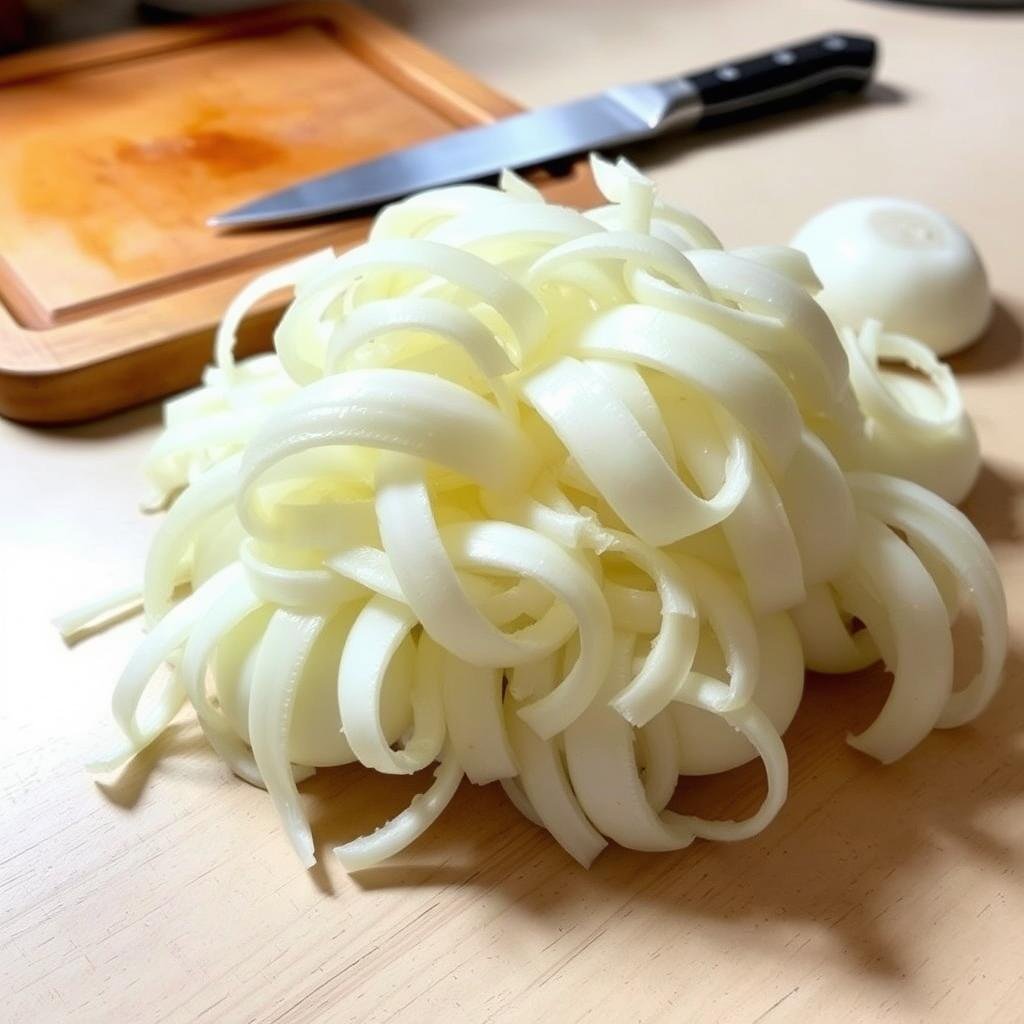
Before starting the fermentation, it’s key to clean onions well. Rinse them under cold water to get rid of dirt and pesticides. Then, dry them with a clean towel to prepare for cutting.
When cutting onions for fermenting, the slice thickness matters a lot. Thin slices ferment quicker because brine gets in faster. But, they might get too soft. Thicker slices stay crunchier but take longer to ferment.
Suggested Cutting Techniques: For even results, slice onions into uniform pieces. Rings, half-moons, and finely diced cuts are good choices. Even thickness helps in a consistent fermentation process and texture.
- Rings: Ideal for salads and sandwich toppings.
- Half-moons: Great for stir-fries and casseroles.
- Finely diced: Perfect for condiments and relishes.
Knowing how thickness affects fermentation makes onion prep easier. Clean onions well and pick the right cutting techniques for a great ferment.
Choosing the Right Brine Solution
Making a Basic Saltwater Brine Recipe is key for fermenting onions. It needs water and salt. The salt level should be about 2% for the best results.
The Basic Saltwater Brine Recipe is the base of your fermentation. But, adding spices and herbs can make it better. Try garlic, dill, mustard seeds, and peppercorns for taste and health benefits.
It’s important to check the brine’s pH levels. A pH below 4.5 stops harmful bacteria. This makes your fermented onions safe and tasty.
Here’s a table comparing a Basic Saltwater Brine Recipe to one with herbs and spices.
| Component | Basic Saltwater Brine Recipe | Enhanced Brine Recipe |
|---|---|---|
| Water | 4 cups | 4 cups |
| Salt | 2 tbsp | 2 tbsp |
| Garlic | – | 2 cloves |
| Dill | – | 1 tbsp |
| Mustard Seeds | – | 1 tsp |
| Peppercorn | – | 1 tsp |
Learning to make pickling brine and customizing it is key. So, explore your spice cabinet. Try new flavors. Make a brine that makes your fermented onions a hit in the kitchen.
The Fermentation Process
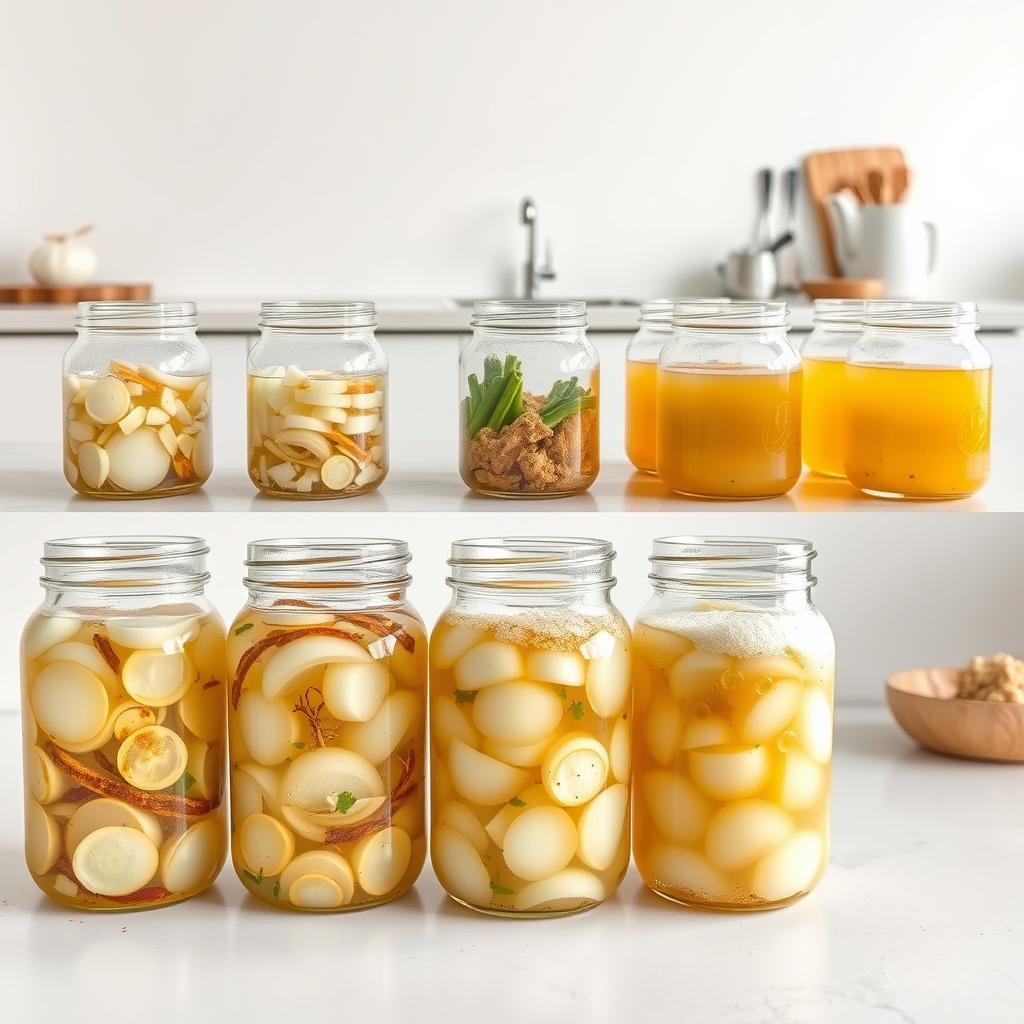
Starting the fermentation process at home can make onions tangy and unique. It’s key to follow step-by-step instructions for success. This journey usually takes 10 to 21 days.
At the start, use a loose lid on the jar. This lets gases out without letting bad stuff in. As onions ferment, their color will change to duller tones. This is a good sign.
It’s important to keep onions under the brine to stop mold. Check on them every day, first week. Make sure they stay covered and release any pressure.
- The brine will get cloudy, which is normal.
- Kahm yeast might show up; it’s safe but can be wiped off if you want.
For more on fermenting onions and making sure it goes well, check this resource.
| Fermentation Stage | Key Activities |
|---|---|
| Initial Setup (Day 1-3) | Submerge onions in brine, cover jar with a loose lid. |
| Active Fermentation (Day 4-7) | Look for carbon dioxide bubbles, watch for Kahm yeast, and keep onions covered. |
| Maturation (Day 8-21) | Keep watching and let out any extra pressure. Store the jar in a cool, dark spot. |
By following these step-by-step instructions closely, you’ll get great results. Watching them closely and keeping them in brine is key.
Storing Fermented Onions
Choosing the right container for fermented onions is key. Look for airtight solutions like a glass jar with a tight lid. This keeps the onions’ flavor and probiotics safe. The right container ensures your onions stay good for a long time.
To store pickled onions right, keep them cool and dark, like in the fridge. This stops fermentation and keeps their good stuff. Pick a container that fits in your fridge well and doesn’t get too hot or cold.
Now, let’s talk about the best storage conditions and how long fermented onions last:
- Refrigerator Temperature: Below 40°F (4°C)
- Container: Airtight glass jars
- Duration: Up to several months
Following these tips and picking the right container means you can enjoy fermented onions for a long time. They add great taste and health benefits to your food.
Troubleshooting Common Issues
Fermenting onions can sometimes present challenges. It’s important to know what to do if onions float during the process. Floating onions can be kept submerged by using fermentation weights or a small plate.
Signs of bad fermentation include foul smells, slimy textures, and colored molds. If you encounter any of these issues, it means the batch has spoiled. It should be thrown away right away to avoid harm.
Adjusting the flavor and texture of fermented onions is often a matter of altering fermentation time or salt concentration. If the onions are too sour, try a shorter fermentation period next time. Fermentation problems, such as overly acidic or too salty ferments, can often be resolved by tweaking the recipe or using the fermented onions in other dishes like soups or stews to balance the flavors.
If you wonder what to do if onions float, another viable option is to ensure your jar has ample headroom to account for expansion. Removing excess gas daily by opening the jars can prevent jars from overflowing.
- Rinsing the fermented onions briefly under clean water can help reduce excess saltiness.
- Incorporating fermented onions into cooked dishes is another effective way of balancing flavors.
For a successful fermentation process, maintain proper hygiene and use suitable containers to avoid any unexpected issues. Proper management and vigilant monitoring of the fermentation process can yield delicious and safe fermented onions.
Using Fermented Onions in Recipes
Fermented onions are very versatile. They’re great in many meals. You can add them to sandwiches, salads, or use them as a garnish.
They have a smooth texture and a tangy taste. This makes them perfect for adding a twist to classic recipes. When you’re incorporating them into meals, add them after cooking to keep their probiotic benefits.
Looking to try new things? Mix fermented onions with other ingredients. This boosts flavor and nutrition. Here are some ideas:
| Recipe | Ingredients | Use of Fermented Onions |
|---|---|---|
| Burgers | Ground beef, cheese, lettuce, tomato | Use as a tangy condiment on top of the patties |
| Tacos | Tortillas, chicken or beef, pico de gallo | Add fermented onions as a topping to enhance flavor |
| Avocado Toast | Avocado, whole grain bread, olive oil, salt | Spread on top of avocado for a delightful crunch and zing |
Nutritional Information of Fermented Onions
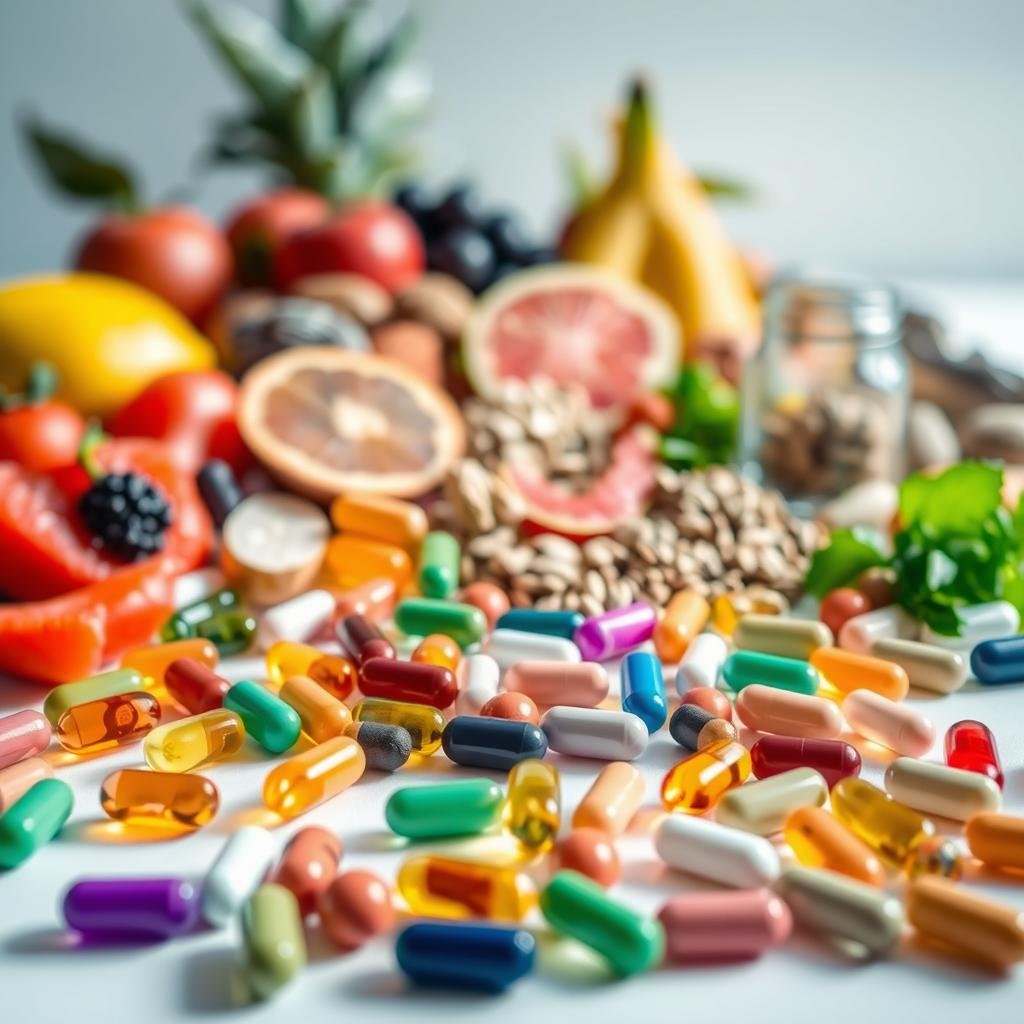
Fermented onions are great for your diet. They keep and sometimes boost the vitamins and minerals in raw onions. These nutrients help your health in many ways, like boosting your immune system and keeping your bones strong.
The fermentation process makes more of these good compounds available. It also creates short-chain fatty acids that are good for you.
Fermented onions are better for your digestion. Unlike raw onions, they don’t upset your stomach as much. This is because fermentation breaks down parts of the onion that can cause trouble.
For more on how fermented onions affect your gut, check out this link.
Here’s a look at what raw onions and fermented onions have in common and what’s different:
| Nutrient | Raw Onions | Fermented Onions |
|---|---|---|
| Vitamin C | 7 mg | 8 mg |
| Vitamin B6 | 0.12 mg | 0.15 mg |
| Vitamin K | 0.4 mcg | 0.5 mcg |
| Probiotics | 0 CFU | 3 billion CFU |
Fermented onions also have other health perks. They help your gut by increasing good bacteria and reducing inflammation. They even help fight oxidative stress, which is good for your digestion.
If you want to eat more vitamins and minerals and improve your gut health, try fermented onions.
Exploring Other Fermented Vegetables
Fermenting vegetables like carrots and cabbage adds variety to your diet. They bring different flavors and textures to your meals. Carrots and cabbage have unique tastes that get better with time.
Beets and cauliflower are great for fermentation too. Beets add a sweet, earthy taste. Cauliflower works well with spices and herbs, making it versatile.
Mixing vegetables can create new and exciting flavors. For example, cabbage and carrots together make a colorful, tasty ferment. These mixes not only taste good but also boost the health benefits of your fermented foods.
Fermenting at home lets you be creative and control what you eat. You can play with flavors, textures, and nutrients. This makes eating more enjoyable and healthy.

